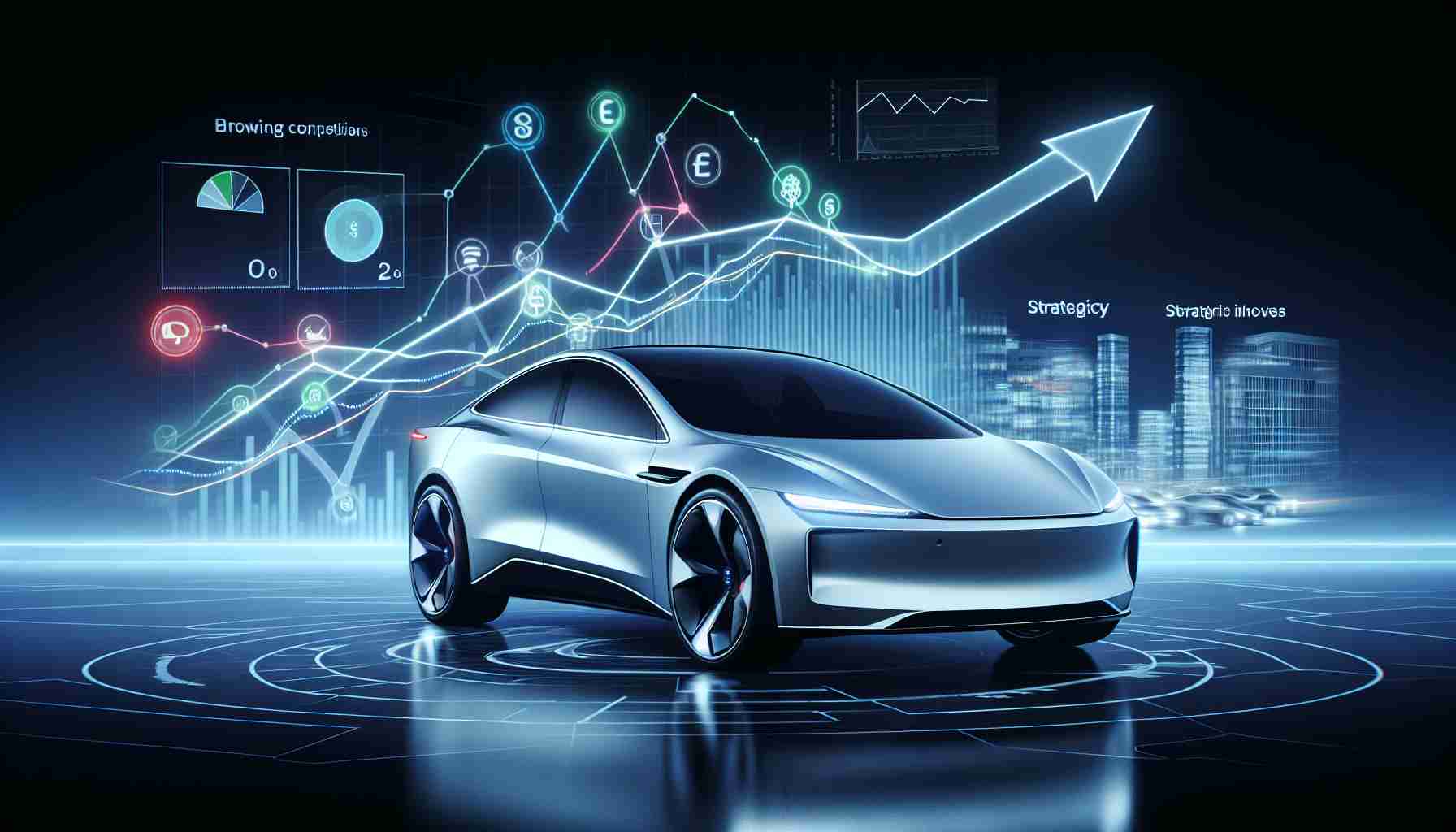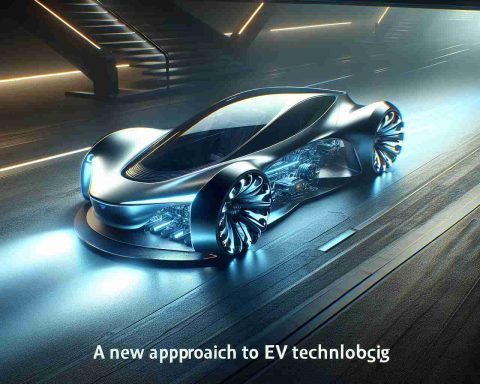Tesla’s recent financial performance reveals a blend of strengths and challenges. The electric vehicle giant reported a substantial revenue of $97.15 billion over the past year. Despite maintaining a “GOOD” financial health rating, pressure on profit margins persists, with the latest gross margin sitting at 18.23% amid a competitive and tough macroeconomic landscape.
Investors are keenly anticipating earnings results expected on January 29, 2025, particularly to gauge the effectiveness of Tesla’s operational efficiency efforts. A silver lining has emerged from the company’s energy segment, which boasts 30% margins and reflects successful deployment strategies, showcasing Tesla’s potential within the broader clean energy transition.
Regionally, Tesla’s market trends are mixed. While sales in China continue to rise impressively, the U.S. market has stagnated, accompanied by some weakness in Europe. This variation highlights Tesla’s need to diversify its product offerings to penetrate various market segments effectively.
Future growth hinges significantly on Tesla’s initiatives in autonomous driving and artificial intelligence. The company’s Full Self-Driving (FSD) technology is gaining traction, and analysts foresee its adoption rate possibly surpassing 50% in the coming years. This shift could transform Tesla’s financial model. Additionally, Tesla’s Robotaxi concept presents another significant opportunity, with some estimates suggesting the potential for a market capitalization of $4.7 trillion by 2030, contingent on overcoming various hurdles.
However, Tesla’s journey is not without obstacles. Increasing competition from both established automakers and new entrants, particularly from China, poses significant challenges. The combination of traditional industry players investing heavily in electrification and competitive pricing from Chinese manufacturers threatens Tesla’s market share.
As the regulatory landscape evolves, upcoming shifts in electric vehicle incentives could further influence Tesla’s future, illuminating the importance of ongoing strategic adaptations. Ultimately, while Tesla’s brand strength and early entry into the EV market confer advantages, its ability to innovate and maintain market leadership will be crucial in the face of mounting competitive pressures.
The Broader Implications of Tesla’s Performance on Society and the Economy
Tesla’s financial landscape is more than just numbers; it signifies a pivotal moment in the transition to sustainable energy. As the electric vehicle (EV) industry matures, its impact ripples through societal, cultural, and economic dimensions, shaping trends that will influence global markets for years to come.
The impressive revenue of $97.15 billion and the robust margins from Tesla’s energy sector indicate a burgeoning acceptance of clean energy solutions. This shift toward renewable resources is culturally significant, fostering a growing acceptance of sustainability in consumer behavior. Consumers are increasingly inclined to invest in technologies that align with eco-friendly values, thereby influencing market dynamics. As Tesla champions this cause, it not only alters perceptions of electric cars but also promotes a broader cultural shift toward renewable energy solutions.
Tesla’s challenging financial metrics, notably pressure on profit margins, signal underlying issues within the EV market landscape, particularly in the face of rising competition. The drive for innovation amidst this competitive pressure underscores a broader economic trend. Established automotive players and nimble startups alike are accelerating their investments in electrification. This influx of innovation leads to improved technology and more affordable EV options, ultimately benefiting consumers and stimulating wider adoption—a crucial factor in combatting climate change.
Environmental impacts due to an increase in EV adoption could be profound. As more households transition away from fossil fuels and embrace electric options, we may see significant reductions in greenhouse gas emissions. Tesla’s ventures into renewable energy generation and battery storage further emphasize the necessity of interlinking these innovations. The sustainability benefits extend beyond merely reducing vehicular emissions; they contribute to a more resilient energy grid and increased energy security.
However, the trajectory toward a more electric future hinges on regulatory frameworks that either support or hinder growth. The upcoming shifts in electric vehicle incentives could either stimulate demand or create market hurdles for Tesla and its competitors. Effective legislative backing is crucial for ensuring that electric vehicles become accessible to a larger segment of the population, thereby amplifying their environmental benefits.
Looking ahead, trends indicate that the integration of autonomous driving and artificial intelligence will revolutionize both Tesla’s operational model and the broader automotive market. The potential for widespread adoption of Tesla’s Full Self-Driving technology could redefine personal mobility and logistics. The anticipated Robotaxi concept, with projections of a $4.7 trillion market capitalization, hints at transformative prospects not only for Tesla but for urban infrastructure and transportation systems worldwide.
In conclusion, while Tesla stands at the forefront of the electric vehicle revolution, the intertwined challenges of competition and regulatory validation necessitate agile strategic maneuvers. The company’s ability to innovate will determine not just its market position, but also the pace and efficacy of the transition to sustainable energy, with lasting implications for society and the global economy. As Tesla navigates this dynamic landscape, its journey will serve as a bellwether for the entire electric vehicle industry, catalyzing significant societal changes in the way we approach transportation and energy consumption in the modern world.
Exploring Tesla’s Future: Navigating Opportunities and Threats
As Tesla navigates its financial landscape, stakeholders are increasingly curious about the future of this electric vehicle pioneer. Below, we break down important aspects of Tesla’s journey, including FAQs, pros and cons, predictions for the company’s trajectory, and valuable quick tips regarding investment and market positioning.
FAQs About Tesla’s Future
Q: What are Tesla’s upcoming products that might drive growth?
A: Tesla is expected to unveil several new models, including the much-anticipated Cybertruck and a more affordable compact vehicle aimed at emerging markets. The expansion of its energy products, such as solar roofs and energy storage systems, also presents potential growth avenues.
Q: How does Tesla’s energy segment impact overall profitability?
A: The energy segment, with margins at 30%, enhances overall profitability and differentiates Tesla from traditional automakers. This growth could lessen the reliance on vehicle sales as a sole revenue driver.
Q: What role does AI play in Tesla’s future?
A: Artificial intelligence is central to Tesla’s Full Self-Driving technology. Enhancements in AI may lead to improved vehicle performance and safety, potentially increasing consumer appeal and adoption rates.
Pros and Cons of Investing in Tesla
Pros:
– Market Leader: Tesla enjoys a strong brand recognition and a first-mover advantage in the EV market.
– Innovation Focus: Continuous advancements in technology and energy solutions position Tesla favorably against competitors.
– Growth Potential in AI and Robotaxi Concepts: Predictions indicate that autonomous driving and Tesla’s Robotaxi service could unlock massive revenue opportunities.
Cons:
– Intense Competition: The influx of new electric vehicles from established brands and startups, particularly from China, could impact Tesla’s market share.
– Regulatory Risks: Evolving regulations concerning EV incentives may affect sales and market dynamics.
– High Dependency on Production Efficiency: Ongoing supply chain challenges and potential factory slowdowns could strain profitability.
Predictions for Tesla’s Market Position
As the electric vehicle landscape rapidly evolves, analysts predict that Tesla could maintain its market share if it continues to innovate and adapt. However, the competition will be fierce over the next five years, particularly from Asian manufacturers who are gaining ground. By 2030, Tesla’s Robotaxi initiative could shift the company’s revenue model dramatically, potentially contributing to a massive market capitalization, provided that regulatory and technological challenges are effectively addressed.
Quick Tips for Investors
1. Diversify Your Portfolio: While Tesla represents a significant investment opportunity, consider diversifying into related sectors such as renewable energy and battery technology to mitigate risk.
2. Monitor Regulatory Changes: Stay updated on policy shifts regarding EV incentives and emissions standards, as these can significantly influence Tesla’s sales and market strategy.
3. Keep an Eye on Competition: Regularly assess announcements from competitors regarding new models and production capabilities to anticipate shifts in market dynamics.
In conclusion, while Tesla’s current trajectory boasts promising elements, it is crucial for investors to be aware of the inherent challenges. By actively engaging with market trends and understanding the broader context of Tesla’s operations, one can make informed decisions in an evolving landscape. For further insights on investing in electric vehicles, visit Investing in Electric Vehicles.


















